Informational True Crime Blog. Covering various true crime cases such as Ivan Milat, Charles Starkweather, Dean Corll, The Clutter Family Murders and more.
Don't wanna be here? Send us removal request.
Text
The 340 Cypher from Zodiac Killer was solved.


691 notes
·
View notes
Photo


Ann Arbor News Reporter William B. Treml Interviews Co-Ed Murderer John Norman Collins, January 1977
38 notes
·
View notes
Photo

1998, Sydney
84 notes
·
View notes
Photo

Paul Stine, later a victim of the Zodiac Killer, at his job as a reporter for the Turlock Journal, early 1960s.
147 notes
·
View notes
Photo
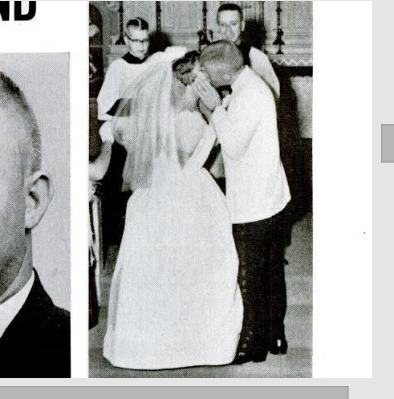
Charles Whitman gives his bride, Kathleen Leissner, a kiss on their wedding day, August 1962.
66 notes
·
View notes
Text

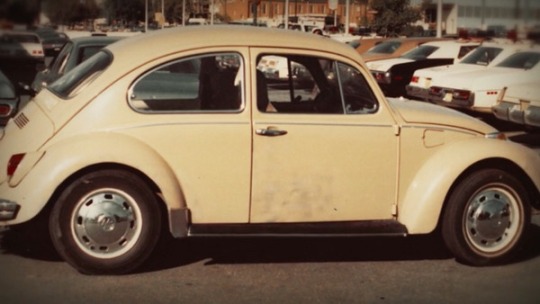
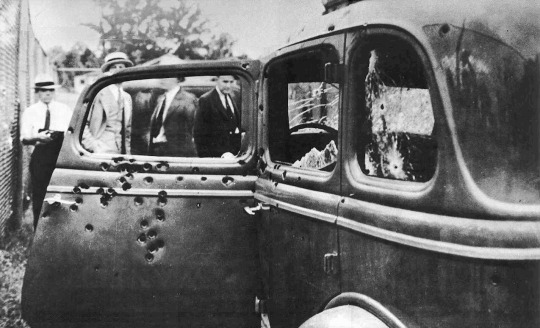
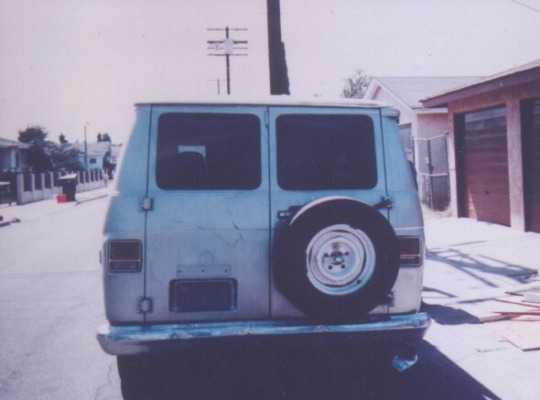
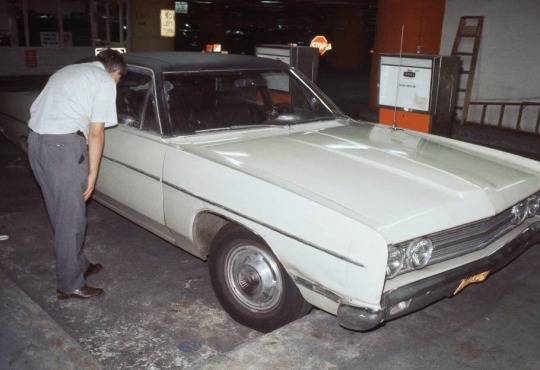
Killer Cars
1. O.J. Simpson’s White Ford Bronco - The now-infamous Bronco was driven by O.J. during his two-hour-long, 75-mile Southern California car chase.
2. Ted Bundy’s 1968 Volkswagen Beetle - Bundy drove this Beetle during his murderous spree after he removed the passenger seat and inside door handle so he could trap his victims inside the car.
3. Bonnie and Clyde’s V8 Ford - Stolen and driven around the midwest, Bonnie and Clyde were later shot to death in this vehicle after it was bombarded with over 100 armor-piercing bullets.
4. The Tool Box Killer’s Murder Van - Referred to by serial killer duo Lawrence Bitterer and Roy Norris as “Murder Mac”, this 1977 GMC cargo van was used to kidnap and murder teenage girls throughout the 1970s.
5. David “Son of Sam” Berkowitz’ 1970 Ford Galaxie - Berkowitz was caught after police found a gun and a map of the killings inside his vehicle, causing the NYPD to stake out and arrest Berkowitz the moment he climbed into the car.
1K notes
·
View notes
Photo
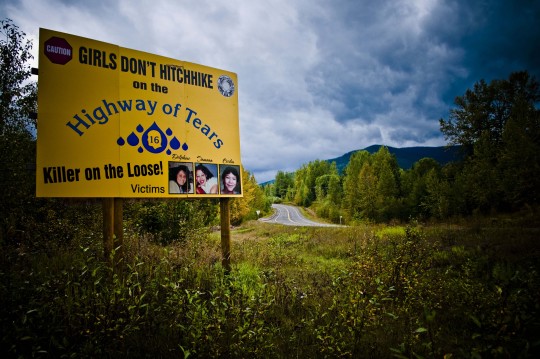
The Highway of Tears
Between Prince George and Prince Rupert in British Columbia, Canada there is a stretch of road that has become known as “The Highway of Tears”. It has been estimated that since 1989 over 30 women have gone missing or have been found raped and murdered along the Highway.
Due to high levels of poverty and the remoteness of towns and villages, many in the area rely on hitchhiking to get around. The RCMP believe that this is how the killer(s) are finding their victim, however little has been done to provide the mostly indigenous population with any transport or infrastructure.
The RCMP has a long history of systemic racism against First Nations and Indigenous peoples and the Highway of Tears is a perfect display of this. The RCMP were extremely hesitant to investigate the Highway of Tears, that was until they uncovered a white victim.
Off the back of this they have now launched ‘Project E-PANA’ but many fear it may be too little too late. The investigation was initially brushed off due to the majority of the victims being First Nations or Indigenous.
It is unknown whether The Highway of Tears is the work of one serial killer or whether Canadian authorities are dealing with multiple perpetrators.
169 notes
·
View notes
Photo


Jim Jones in San Francisco, California, July 1976.
178 notes
·
View notes
Photo

Ivan Milat in 1991 at Wombeyan Caves Road. Three of the Milat brothers owned a small property on the Wombeyan Caves road, twenty five miles from Belanglo. The brothers used the place for camping and shooting practice. Ivan was a frequent visitor, either bringing his girlfriends, friends or just spending time with his brothers and their families. The Wombeyan Caves Road is a New South Wales country road linking Mittagong near the Hume Highway in the east to the Goulburn-Oberon Road at the locality of Richlands in the west. The road is designated as Main Road 258.
33 notes
·
View notes
Photo

Scene in court of Superior Judge Edmunds on December 5, 1928, , as Gordon Stewart Northcott (second from right) appeared for a hearing.
25 notes
·
View notes
Photo

House Where Margaret ‘Roxie’ Ann Phillips Was Shot by serial kiler John Norman Collins, July 1969
34 notes
·
View notes
Photo

Aerial view of the Clutter farm in Holcomb, Kansas. This was the farmhouse of the Herbert Clutters who were slain in a robbery attempt Nov. 15, 1959.
20 notes
·
View notes
Text
Lizzie Borden

Lizzie Borden was an American woman tried and acquitted of the 4th August 1892 murders of her father and stepmother.
Lizzie Borden was born in Massachusetts, her father, Andrew, was known to be very frugal with money and Lizzie and her sister, Emma, had a relatively religious upbringing. Three years after the death of Lizzie’s birth mother her father married again, a woman named Abby. Lizzie was unhappy about the new marriage believing that her new stepmother had married her father for his wealth, the father made gifts of real estate to his Abby’s family which angered the sisters. The live-in-maid testified that Lizzie and Emma rarely ate with their father and stepmother. Family arguments were common including one over Lizzie’s father killing pigeons she had built a roost for following this argument the sisters took extended vacations away from the family home. For several days before the events took place the entire household had been sick, friends suggested this was due to food poisoning from bad meat but Abby had worried it was due to poisoning.
On 4th August 1982, Abby went upstairs to clean. She was attacked; struck first on the side of the head with a hatchet causing her to fall to the ground and then she was struct 17 times directly in the back of her head, killing her. When Andrew arrived home his key failed to open the door he could not because his key jammed, the maid heard Lizzie laughing upstairs (a significant detail as Abby’s dead body would be visible to anyone upstairs) and the maid let Andrew into the house. Lizzie claims she then removed her father’s boots (an anomaly- crime scene photographs show him wearing them when he died) and laid him down for a nap. The maid then testified she heard Lizzie call for her to come and that her father was dead. Andrew was slumped on the couch downstairs and had been struck 10 or 11 times with a hatchet, one of his eyeballs was split suggesting he had been asleep when he was attacked, the kill had been very recently, possibly as recent as 10 minutes ago. The police were called.
In an interview, Lizzie’s answers were strange, contradictory and she repeatedly changed them. She was found to have destroyed items of clothing, purchased acid from the drug store and the murder weapon was found in the basement she had been seen cleaning items in. Lizzie Borden was acquitted at trial and left the courthouse telling reporters she was ‘the happiest woman in the world.’
After the trial, Lizzie gained all family possessions, including those of Abby. As Abby had died first, her property had gone to Andrew and after his death to Lizzie. Money was given to Abby’s family as a settlement. Emma later moved out of the house and never saw her sister again. Lizzie eventually died of pneumonia in 1927.
No one was ever charged with the murders and the case remains unsolved although there is heavy speculation Lizzie was the murderer. Lizzie Borden has remained a prominent figure in pop culture with the folklore rhyme: “Lizzie Borden took an axe And gave her mother forty whacks. When she saw what she had done, She gave her father forty-one.” The truth of what really happened remains a mystery.
86 notes
·
View notes
Photo

Mugshot of serial killer, Edward Wayne Edwards, 1958.
31 notes
·
View notes
Photo

Harold, Lois and Dennis Jurgens, 1962.
Dennis Craig Jurgens was an American 3-year-old boy who was murdered in White Bear Lake, Minnesota in April 1965. Jurgens was the only fatal victim of Lois Jurgens, his adoptive mother and a prolific child abuser, who abused a total of six adopted children from 1950 to 1970. The trial of Lois Jurgens for the murder of 3-year-old Dennis made national headlines and was the top news story of the state of Minnesota in 1987.
22 notes
·
View notes
Photo


“Given in marriage by her father, the bride wore an original gown of white peau de soie and imported lace. The fitted bodice was fashioned with bateau neckline formed by alencon lace and butterfly sleeves. The back of the bell-shaped skirt was highlighted with self roses. Multiple tiers of tulle formed the short bridal veil which was held in place by a lace cabbage rose. She carried white Carnations and English Ivy surrounding a purple-throated orchid. “
Kathleen Leissner on her wedding day to Charles Whitman
32 notes
·
View notes
Photo

Sheriff Douglas Harvey Examines the Body of Dawn Basom, a victim of serial kiler John Norman Collins, April 1969
37 notes
·
View notes